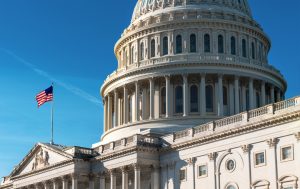The week of July 21-23, 2025, was a whirlwind for global markets, dominated by President Donald Trump’s assertive “America First” trade agenda and the looming August 1st tariff deadline. For FX traders, this period was a masterclass in volatility, as major currency pairs reacted to every twist and turn in the trade narrative. Let’s break down how these high-stakes negotiations impacted EURUSD, GBPUSD, DXY, and USDJPY.
Trump’s Deadline Diplomacy
President Trump’s strategy was clear: leverage the threat of steep tariffs to secure bilateral trade deals. With the August 1st deadline fast approaching, his administration intensified pressure on key trading partners. This “sword of Damocles” approach kept markets on edge, as the prospect of escalating tariffs loomed large.
Deals on the Table: Japan and the Philippines
On July 23, President Trump announced a “massive Deal with Japan,” claiming it was “perhaps the largest Deal ever made”. The agreement included a 15% reciprocal tariff on Japanese goods entering the US, a notable reduction from the previously threatened 30%. Japan, in turn, agreed to open its markets to American exports like cars and agricultural products, and committed to a $550 billion investment in the US. Japanese automaker stocks surged on the news, signaling market relief.
A day earlier, on July 22, a trade agreement with the Philippines was unveiled. This deal saw the US impose a 19% tariff on Philippine imports, a slight reduction from the 20% initially threatened. In exchange, the Philippines pledged “ZERO Tariffs” on US goods, particularly in automotive and agriculture sectors, and deepened military cooperation. This highlights the asymmetric nature of some of Trump’s “reciprocal” deals, often prioritizing US market access and strategic ties.
Europe’s Standoff
Meanwhile, trade tensions with the European Union remained elevated. Trump had threatened a 30% tariff on EU goods, effective August 1st, citing persistent trade deficits. The EU, preparing counter-tariffs of its own, opted for a “peace offering” by omitting specific rates, signaling a desire to negotiate rather than escalate. However, Trump’s firm stance of “no extensions” kept the pressure on, with economists warning of significant harm to EU exports and potential US inflation.
FX Market Reactions: A Mixed Bag
- EURUSD: Despite the looming EU tariff threat, EURUSD showed an upward trend on July 21-22, gaining over 0.5% each day before a slight dip on July 23. This suggests other factors, like potential dollar weakening or European fiscal optimism, temporarily outweighed tariff fears.
- GBPUSD: The British Pound also exhibited an upward bias, with reports indicating gains on July 21-22. The US dollar’s broader movements were a key driver, as demand for the greenback began to decline on Monday.
- DXY (US Dollar Index): The DXY saw a slight decline or stability around 97.3-97.8 during this period. While the dollar often acts as a safe-haven during trade wars, the market may have been focusing on the economic costs of tariffs and expectations of Federal Reserve easing, which would typically weigh on the dollar.
- USDJPY: This pair saw some consolidation after a significant rally leading into the period. The “massive trade deal” with Japan likely reduced safe-haven demand for the Yen, which could have supported USDJPY, though subsequent slight declines might reflect profit-taking or scrutiny of the deal’s details.
The Bottom Line
The period of July 21-23, 2025, underscored the complex interplay of trade policy, geopolitical strategy, and monetary policy expectations. While Trump’s tariff threats often spurred short-term safe-haven demand for the dollar, the announcement of bilateral deals and the broader economic implications of trade wars created a nuanced and often contradictory environment for currency movements. For investors, understanding these dynamics is crucial in navigating an ever-evolving global landscape.



